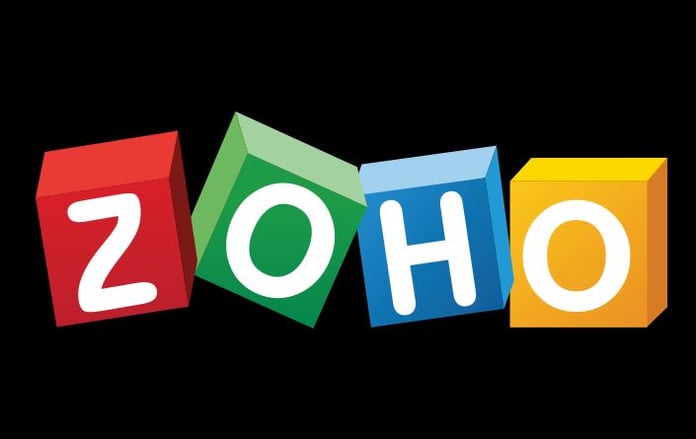When you think of office productivity and collaboration suites, Microsoft 365 and Google G Suite are probably the first brands that spring to mind. Microsoft pretty much invented the category, and since introducing G Suite for Business, Google has grown to become a formidable rival.
However, another vendor—one that you may not yet be familiar with—is challenging these behemoths and making steady headway. Zoho, a privately held, profitable company with more than 9,000 employees, has formally introduced Zoho Workplace, a one-stop shop for cloud-based collaboration, productivity and communications tools.
Not new, but newly integrated
Zoho Workplace offers nine core, tightly integrated productivity and collaboration solutions. Zoho has provided all of these applications for many years but is now pulling them together into a more integrated offering. The new Workplace package includes email, messaging, audio and video conferencing; productivity tools, including word processing, spreadsheet and presentation applications; and shared file storage.
Built on the same data model and platform, Zoho has unified these applications with a common search and AI, and dashboard capabilities and deeper integration between applications. These new capabilities help take the friction out of collaboration. For instance, from Zoho Mail, users can make audio or video calls, edit document attachments in Zoho Writer, meet online with contacts, and access all of their email accounts.
Workplace extends integration beyond productivity and collaboration, however. Zoho has built integrations to Zoho’s other 40-plus business applications, and to third-party solutions. Users can also create custom workflows to inject business-related context within its collaboration tools. This streamlines collaboration across different business processes, from invoicing to marketing.
For example, Zoho Meeting connects to Zoho Projects, Bookings, CRM, and other Zoho apps; and Zoho Connect (a social intranet) connects with HR systems from Zoho and third-party HR vendors. In fact, several Zoho Workplace apps integrate with third-party apps, such as Zoho Show, which integrates with Atlassian, Unsplash, and Humaans.
These integration and workflow capabilities are the reason that some customers are choosing Workplace. According to Anders Boulanger, Founder and CEO at Enagify, which provides sales enablement and training services, “With Zoho, the whole really is greater than the sum of its parts. The tools in Zoho Workplace have given Engagify a powerful hub of communication and collaboration. Since we work to engage and enable digital sales and marketing teams, it’s critical that our own engagement is seamless and Zoho has allowed us to do that and more, scaling to help us grow in a way that no other platform would’ve been able to.”
Privacy is standard
Zoho took a “Privacy Pledge” earlier this year, promising that it will not allow any third-party trackers to monitor user behavior. The vendor does not support any part of its business, including its free products, with ad revenues, and has pledged that it will never sell any data to ad-based companies. Since Zoho runs on its own cloud infrastructure—instead of on public clouds such as AWS or Google, that also have ad-based businesses—they can’t track Zoho user behavior either.
As I discussed here, this is an important differentiator. Most people are well aware that we pay for the “free” applications we use with our data. From Facebook to Google to Pinterest, vendors monetize user data through advertising and by tracking and selling our data to third parties.
But few people realize that many B2B companies allow surveillance companies to track their paying users on their sites. That’s right; even if you spend a small fortune on business software, some of the big names in the industry are trading user data for products and services from companies such as Google, Twitter and LinkedIn.
Disruptive pricing
Many vendors talk about how the cloud democratizes software access by eliminating the need for customers to stand up infrastructure and hire experts to take advantage of very capable, sophisticated applications.
Zoho takes democratization a step more by offering extremely affordable pricing. Workplace pricing starts at $3/user/month for the Standard version and $6/user/month for the Professional versions. Zoho can hold pricing down because it doesn’t invest as much in sales and marketing as its competitors. While Zoho has been expanding its marketing, sales, and influencer initiatives over the last couple of years, it doesn’t come close to the 50% rate top software-as-a-service invest in this area.
Perspective
I’ve been interested in what makes Zoho tick since I was first introduced to the company in the early 2000s. It has always had a different vision of success and taken a different path to market than the software giants it competes with.
However, while many companies are unlikely to consider switching from Microsoft or Google, Zoho Workplace has already made good inroads into the market. According to Zoho, Workplace adoption spiked in the last quarter, and the solution is now deployed by 2 million organizations, with 15 million users across more than 150 countries. The vendor also notes that more than a quarter of new Zoho Workplace customers have switched from G Suite and Microsoft.
Zoho is still a David in relation to the Goliaths. However, Workplace provides some advantages that are serendipitously well-suited to the challenges many businesses face today. In addition to helping companies streamline collaboration and workflow, Zoho’s security and price advantages dovetail with problems that are keeping many businesses up at night—and ones that many startups want to avoid in the first place. These benefits provide Zoho with a path to make an increasingly convincing case to those that are receptive to taking the road less traveled.
Laurie McCabe is a co-founder and analyst at SMB Group, specializing in small-business IT. ©SMB Group 2020
